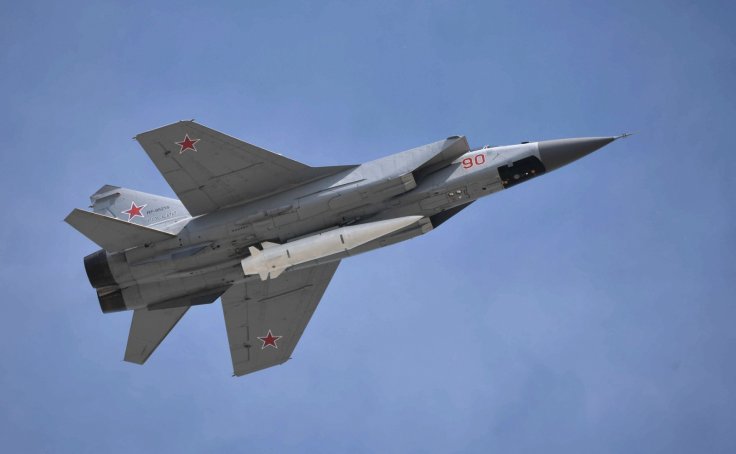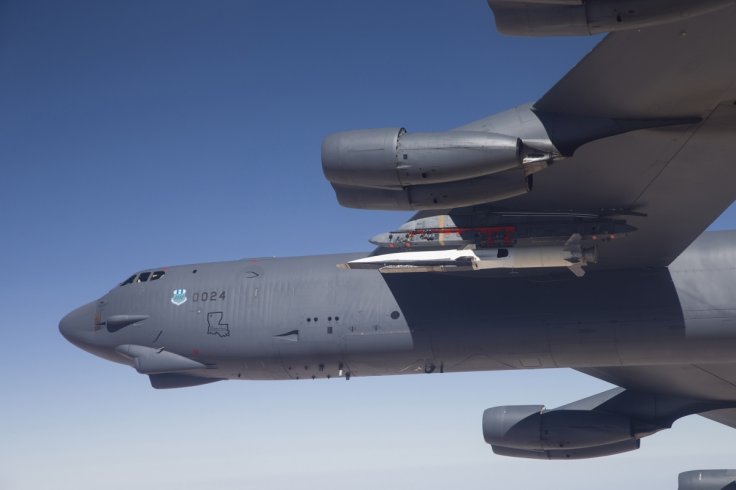The United States and China are engaged in a high-profile arms race to develop the most lethal hypersonic missiles, as both Washington and Beijing continue to build and test more high-power next-generation weapons. The move is in a bid to prove one's supremacy over the other in terms of power.
"There is an arms race, not necessarily for increased numbers, but for increased quality," the US Air Force Secretary Frank Kendall told Reuters. China reportedly has been conducting tests of its hypersonic weapons lately as competes with the United States in the space race.
Race for Supremacy

Kendall said that both the countries have been involved in the hypersonic missile race for quite some time to prove their supremacy and China has been moving aggressively lately. "It's an arms race that has been going on for quite some time," he said. "The Chinese have been at it very aggressively." Kendall told Reuters during an interview at the Pentagon.
Kendall's comments come just weeks after Chairman of the Joint Chiefs of Staff Gen. Mark Milley said that Beijing had been conducted tests of its hypersonic weapons systems over the summer, much like the "Sputnik moment" of the late 1950s when the Soviet Union and the United States were competing in the space race.

Naturally, this once again proves the growing tensions between the two countries. However, both the countries have been doing it quite silently but definitely aggressively.
The arms race has only intensified between the United States and China lately. However, none of the countries can claim complete supremacy in the space at present. The Pentagon conducted a hypersonic missiles test of its own this year, but came up with mixed results. A test for an experimental system from the Pacific Spaceport Complex on Kodiak Island in Alaska in October failed because of a problem with the booster system, according to Reuters.
A Different Kind of War
Not only China, even Russia has been making aggressive moves in the space. And it is no way lagging behind the United States. Russia's recently test a Tsirkon hypersonic cruise missile that was launched from a submarine in the north of the country. The test made US military planners take notice of the situation and on the prospect of America falling behind its two superpower rivals.
Needless to say, development of hypersonic weapons is the announcement of a new arms race. Hypersonic missiles are defined as missiles launched by a rocket into Earth's upper atmosphere at speeds of Mach 5 and above (five times the speed of sound or 6,174 kilometers (3,836 miles) per hour), before maneuvering towards a target.

A large number of countries already have intercontinental ballistic missiles (ICBMs) that travel equally faster or even faster. However, ICBMs are not capable of changing trajectory once fired. The new generation of hypersonic missiles is a lot superior and comes with more precision as it is equipped with glide vehicles that approach their targets at high speed in the final phase of flight.
During the interview Kendall accepted that the United States has lately lagged in the hypersonic weapons race as it focused resources on Iraq and Afghanistan at its expense. "This isn't saying we've done nothing, but we haven't done enough," he said.
Kendall also admitted that the military's equipment could use an overhaul.
On the other hand, the recent Chinese tests involved not only a hypersonic glide vehicle, but also a "fractional orbital bombardment system" that enables the release of various payloads in flight prior to entering the atmosphere, enabling multiple targets to be reached that can be very far apart from each other.









